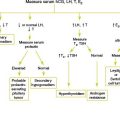Chapter 21 HEART MURMUR
Key Physical Findings
 Vital signs, including heart rate, respiratory rate, and blood pressure
Vital signs, including heart rate, respiratory rate, and blood pressure
 Growth parameters plotted on a growth chart
Growth parameters plotted on a growth chart
 General assessment of overall appearance
General assessment of overall appearance
 Dysmorphic features or extracardiac anomalies
Dysmorphic features or extracardiac anomalies
 Signs of respiratory distress such as tachypnea, retractions, grunting, or nasal flaring
Signs of respiratory distress such as tachypnea, retractions, grunting, or nasal flaring
 The first heart sound, which reflects closure of the mitral and tricuspid valves, is typically single and is best heard at the left lower sternal border
The first heart sound, which reflects closure of the mitral and tricuspid valves, is typically single and is best heard at the left lower sternal border The second heart sound, which reflects closure of the aortic and pulmonary valves, is split, varies with respiration, and is best heard at the left upper sternal border
The second heart sound, which reflects closure of the aortic and pulmonary valves, is split, varies with respiration, and is best heard at the left upper sternal border Third and fourth heart sounds can be normal in the child, are typically low in frequency, and are best heart at the cardiac apex
Third and fourth heart sounds can be normal in the child, are typically low in frequency, and are best heart at the cardiac apex Murmurs should be described by their intensity, timing, location, and radiation. Any variability of the murmur with a change in position or a maneuver should be described
Murmurs should be described by their intensity, timing, location, and radiation. Any variability of the murmur with a change in position or a maneuver should be described Dynamic maneuvers, including respiration, Valsalva, exercise, and postural changes, may provide important diagnostic information.
Dynamic maneuvers, including respiration, Valsalva, exercise, and postural changes, may provide important diagnostic information.1. Frommelt M.A. Differential diagnosis and approach to a heart murmur in term infants. Pediatr Clin North Am. 2004;51:1023–1032.
2. Harris J.P. Evaluation of heart murmurs. Pediatr Rev. 1995;12:490–493.
3. McConnell M.E., Adkins S.B., Hannon D.W. Heart murmurs in pediatric patients: when do you refer? Am Fam Physician. 1999;60:558–565.
4. Pelech A.N. Evaluation of the pediatric patient with a cardiac murmur. Pediatr Clin North Am. 1999;46:167–187.













